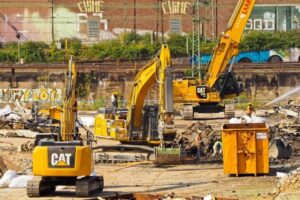Climate-resistant architecture describes a new era in infrastructural design – one which recognises the changing landscape of climate across the world, as global warming continues to wreak ever-greater havoc on weather patterns and ecosystems. With climate change seemingly inevitable in certain territories, it becomes incumbent on architects to design for environments, and for new challenges in the process.
Site and Orientation
First, it is important to understand what needs your building design is meeting. As an extreme example, it would be inappropriate to design flood-proofing into a project destined for high ground. More specifically, a given site will present its own environmental risks – risks that need to be met equitably by architects and project designers.
Just as the site informs the essential requirements a given climate-resistant building must meet, it is also the case that the building can inform the future of the site. Certain design applications (more on which later) can have their own positive impacts on local ecosystems, returning value to environments as well as bracing against them.
Climate-resistant design is also climate-aware design – with aspects of local climate potentially useful to the building in practice. For example, natural airflow and breezes can be used as part of a natural ventilation system – which requires close attention with regard to building orientation overall, as well as proper design of internal ventilation systems. The same might be possible with sunlight and even flooding patterns.
Material Concerns
Next, climate-resistant buildings are made so by the materials from which they are built, just as much as their fundamental design. Materials chosen for a climate-resilient project must necessarily meet a complex range of criteria, ranging from the obscure to the obvious.
Not only are there short-term environmental shocks to plan for, but also long-term environmental factors that can shorten lifespans. Fluctuating humidity over time can wreak havoc on untreated timber constructions; a climate-resilient building might use structural plywood over other timber products to benefit from its resilience against humidity.
At the same time, natural accommodations can be made that co-exist with contemporary material design – to the benefit of the building and the environment. Roofs can become mini-ecosystems of their own, playing host to plant life and artificial homes for endangered local wildlife. Moss can be grown on walls to provide natural insulation and water resistance.
Structure and Layout
Lastly, the design of the building itself – down to the floorplan – can both serve and be served by the environment. For warmer countries, climate-resistant design might place utility spaces along sun-facing exterior walls, as a heat buffer for cooler spaces towards the centre of the building. The inverse can be employed in colder countries, where direct sunlight is much more conducive to the comfort of occupants.
Layout can also be used to properly manage airflow, again to service the needs of differing climates. Proper understandings of heat transfer and convection can be used to harness or utterly dispel thermal energy, keeping living or working spaces temperate in spite of high or fluctuating temperatures.





